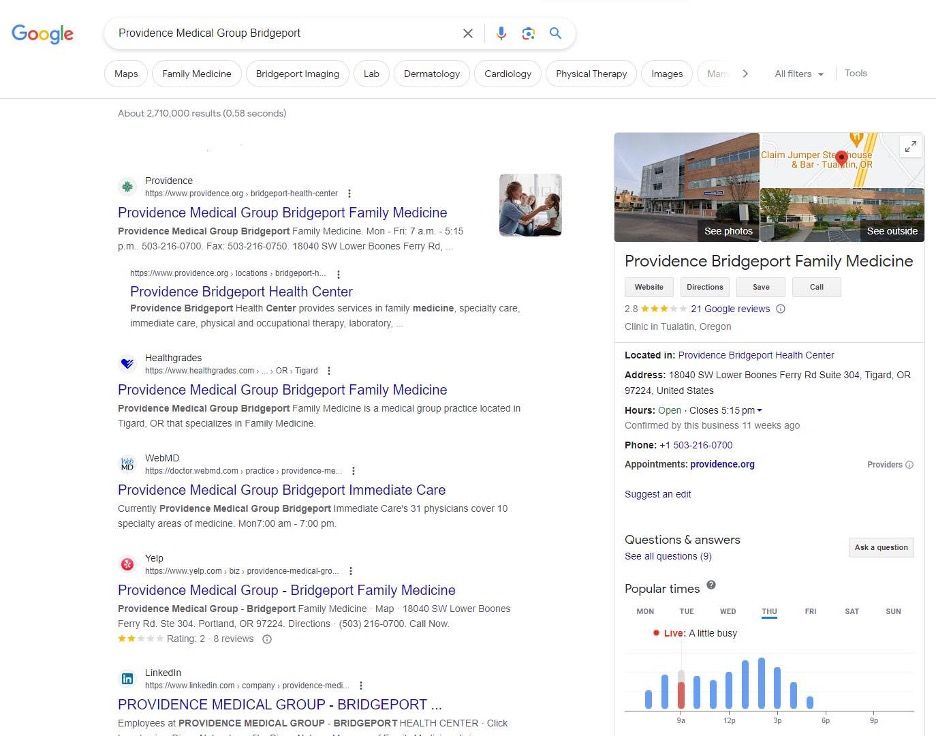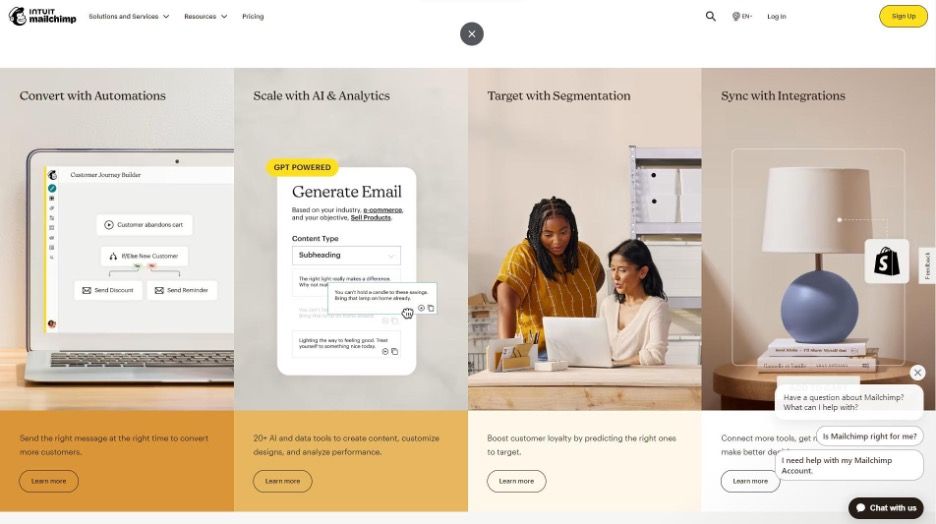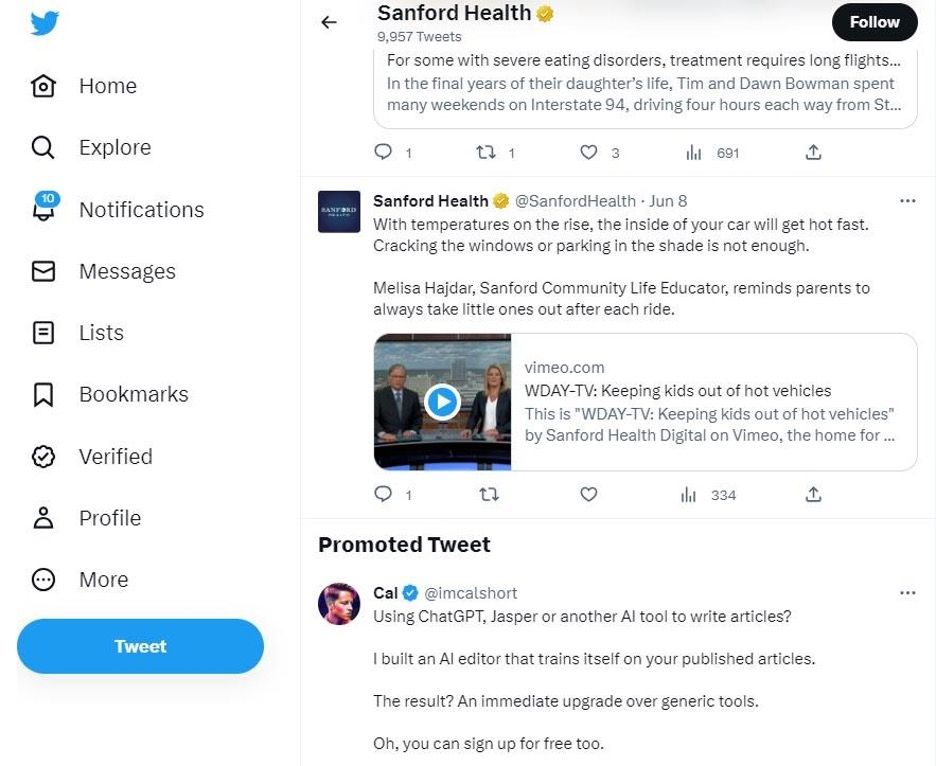Local marketing tips for small practices
Whether you're new in town or are looking to reinvigorate your established business, having a solid review generation strategy in place can have an enormously positive impact.
© Maksim Kabakou - Shutterstock.com

Facebook? Radio ads? Local SEO? Billboards? Email? There’re so many options when it comes to marketing your small medical practice that it can be hard to know where to begin.
With research confirming that 98% of consumers went online to research local businesses in 2022, focusing on activities that make it easier for potential patients to find you on the internet is the most logical place to start.
Before you dive into the different forms your marketing can take, remember that the best results come from consistency. Whether it’s updating your social media profiles, sharing wellness tips on your website, or requesting reviews; slow and steady wins the race. A barrage of activity initially is the digital equivalent of a crash diet—you may see some results early on, but that first flush of success is destined to be short-lived. Instead, think of your marketing efforts as a regular business task, just like bookkeeping or stock checks.
Seven tips for small practices
Tip 1: Claim your free Google Business Profile & optimize your listing
Screenshot courtesy of BrightLocal

If you’re new to Google Business Profile, it’s a free business listing that enables you to share key information about your practice with Google and your local community. Google uses the information you provide to populate its search results and Maps, making it a powerful tool for any local business seeking to raise its profile.
As well as providing basic information about your practice to help prospective patients find you (name, address, and telephone number, for example), you can also offer other useful snippets. If you allow patients to make bookings online, you can link to your appointment scheduling tool, for example. You can also input opening hours, upload videos and share pictures of your practice (interior and exterior images are both recommended).
Your listing is packed with other helpful features. Local people can submit a question via your listing, which you can answer publicly, for example, and you can share business updates known as Posts. Previous clients can submit reviews of your practice and share their images to your listing, while new patients can also get directions to your location.
After creating your Google Business Profile, head to Bing, Here you’ll find Bing Places For Business, which is another listing and do the same.
Tip 2: Build local citations
Screenshot courtesy of BrightLocal

A local citation is another form of business listing. At its most basic, a local citation includes your practice’s name, address, and telephone number. Additional data, such as your website URL, service description, email address, opening hours, and other details about your practice may also be included.
You’ll often find citations on directory sites, but they can also appear anywhere business information is shared—including on review platforms, in newspaper reports, and across social networks.
Local citations are important for SEO because they provide Google with more data about your business. They’re helpful for consumers too and provide another means of discovery for new patients.
When building local citations, you must ensure that your business information is consistent. It should be identical across every listing, and if any of your information changes, you’ll need to ensure each citation is updated accordingly.
There are plenty of dedicated citation sites for health and medical businesses which act as a great starting point. Don’t underestimate the value of building citations on local sites, too, in order to be more visible within your local area.
Tip 3: Request online reviews
Screenshot courtesy of BrightLocal

Positive reviews are an incredible asset for any business—and are especially helpful for small practices looking to grow their patient list. Glowing recommendations from current patients give those looking for a new physician a good insight into the level of care and expertise you offer. It's also well-established that today's consumers trust online reviews as much as, if not more than, in-person recommendations.
Research suggests that as many as 90% of patients refer to online reviews when searching for a new physician. Even more impressive is that 43% of people would go out of their insurance network to deal with a practice that has positive online reviews.
A strong review profile, with a regular influx of positive reviews, will also boost your local search visibility, meaning it will be easier for prospective patients to discover your business at the exact moment they're researching new medical service providers.
Whether you're new in town or are looking to reinvigorate your established business, having a solid review generation strategy in place can have an enormously positive impact.
So, where to begin? If you've completed step one and have claimed your free Google Business Profile, you may already have reviews trickling in. You can speed that process along by creating a review request template. This can take the form of a short email asking your patient to leave an online review sharing their honest feedback about their experiences with you. Be sure to include a link to your preferred review platform (Google is the most trusted amongst local consumers) to make it easy for that person to leave a review. You could also experiment with other methods, such as asking in person or via SMS.
It's important that you respond to reviews that are submitted – your response could actually convince someone to get in touch or schedule an appointment, with 88% of people saying they are likely to use a business that responds to online reviews.
Tip 4: Create a modern, responsive website
Screenshot courtesy of BrightLocal

Even if you don't offer telemedicine or virtual appointments, building a modern, responsive website for your local practice offers many benefits. It's a space where you are in full control and can showcase your practice in its best light. From sharing information about your expertise to highlighting your most glowing patient testimonials, your website should function as the online embodiment of your physical business.
As your online home, your website can also be a treasure trove of useful information for local residents searching for a new physician—information such as your qualifications, where you did your residency, and any accreditations you hold can all help to establish trust and credibility. Further details about your healthcare philosophy, profiles of other members of your practice, helpful resources related to your area of expertise, and good-quality original imagery should all be included.
If appropriate, include an online booking option so visitors can schedule an appointment directly from your website.
Your website should be responsive and work well on mobile devices—the latter being crucial, with Google saying that sites that work well on mobile may rank higher in search results. Opting for a platform like WordPress will also make updates and maintenance easier. If you can't find a local web designer to work with, on-demand platforms like Upwork and Fiverr are a cost-effective and convenient way to match with a freelancer.
It's important to remember that your website will need regular updates. Just as your citations and Google Business Profile should be kept up to date, your website will also need to be accurate and reflect any changes to opening hours, services, contact information and so on.
Tip 5: Create optimized content
Screenshot courtesy of BrightLocal

Helpful, original, and authentic content doesn’t just help to grow trust in your practice. It can also make it easier for potential patients to find you, thanks to improved search visibility.
Even if you aren’t currently pursuing this, chances are your competitors could be. Data from HubSpot confirms that 29% of marketers use SEO-optimized content to attract and convert leads—with 88% of marketers saying they plan to invest around the same or more in SEO in 2023.
Locally optimized content can take many forms. You could share details of an upcoming local clinic or event, for example, or provide detailed information for those planning a journey to your practice, with train or sub information, helpful parking tips, places to stay for out-of-town patients, or family members, local pharmacies, or even places to rent related equipment such as crutches and wheelchairs.
Don’t underestimate the importance of creating good quality content to share helpful information, tips, and advice for website visitors. If you’re a pediatrician, helpful articles for first-time parents on topics such as weaning could be an invaluable resource for your local community. If you’re a family MD, tips for dealing with allergies in the summer, caring for elderly relatives during extreme heat waves, or even detailing how to carry out basic first aid in the event of cuts and scrapes could all be helpful.
Tip 6: Invest in regular email marketing
Screenshot courtesy of BrightLocal

For every $1 you spend on email marketing, you can expect to earn an average of $36 in return. That makes email one of the very best investments you can make to market your small, local practice.
The good news is that you don’t need to create long, overly complex emails to reap the rewards. With most people spending just a few seconds scanning email messages, short and sweet communications perform best.
For your email marketing efforts to deliver, you’ll need to ensure your emails are accessible to all. With 2.2 billion people worldwide living with some form of visual impairment and 20% of the U.S. population affected by dyslexia, your emails should be crafted with care. Popular email platforms such as Mailchimp can do much of the heavy lifting—not only can you access pre-designed templates to create professional-looking messages, but they’ll also handle accessibility considerations for you.
Email is a quick and easy way to stay in contact with your patients, so you should find that you can vary your email content with ease. Practice updates, handy health tips and blog content are all solid starting points.
Tip 7: Stay social
Screenshot courtesy of BrightLocal

Approximately 332 million people are social media users in the USA - and that figure continues to rise yearly. By January 2023, Americans were the second largest Facebook demographic worldwide, with an average of 1300 hours per year spent on social media.
As a small local practice, you don’t need to build an enormous following for a social presence to be worthwhile. Networks like Facebook, Instagram, and TikTok offer a vast range of features that allow you to connect specifically with people in your immediate local area and build an engaged community.
Keeping your social channels updated is surprisingly easy. That’s because you can repurpose much of the effort you’ve invested elsewhere to keep your social profiles updated. You could harvest the most compelling Google reviews to use as status updates, crop snippets of text from your website content, and share questions and answers from your Google Business Profile.
What’s more, you don’t need to be present on every social platform for social media marketing to be worthwhile. Research the networks used by your target audience, and then focus your attention in those areas. To make things even more efficient, consider using a tool such as Hootsuite for bulk uploads and easy scheduling.
Conclusion
Growing your small local practice could be easier than you think with the right marketing strategy. Opting for a range of channels and monitoring your impact is key to success. Even if you don’t have an endless amount of time and an unlimited budget, it is possible to grow your local presence, boost your search visibility, and attract new patients. Don’t be afraid to experiment and try different tactics to find out what works for you.
Mike Hawkes is the Senior Content Marketing Manager at BrightLocal, an all-in-one platform for improving local SEO. With over nine years of experience in digital marketing, he is responsible for devising and executing BrightLocal’s content strategy and delivering a host of local SEO insights to their audience.
Newsletter
Optimize your practice with the Physicians Practice newsletter, offering management pearls, leadership tips, and business strategies tailored for practice administrators and physicians of any specialty.